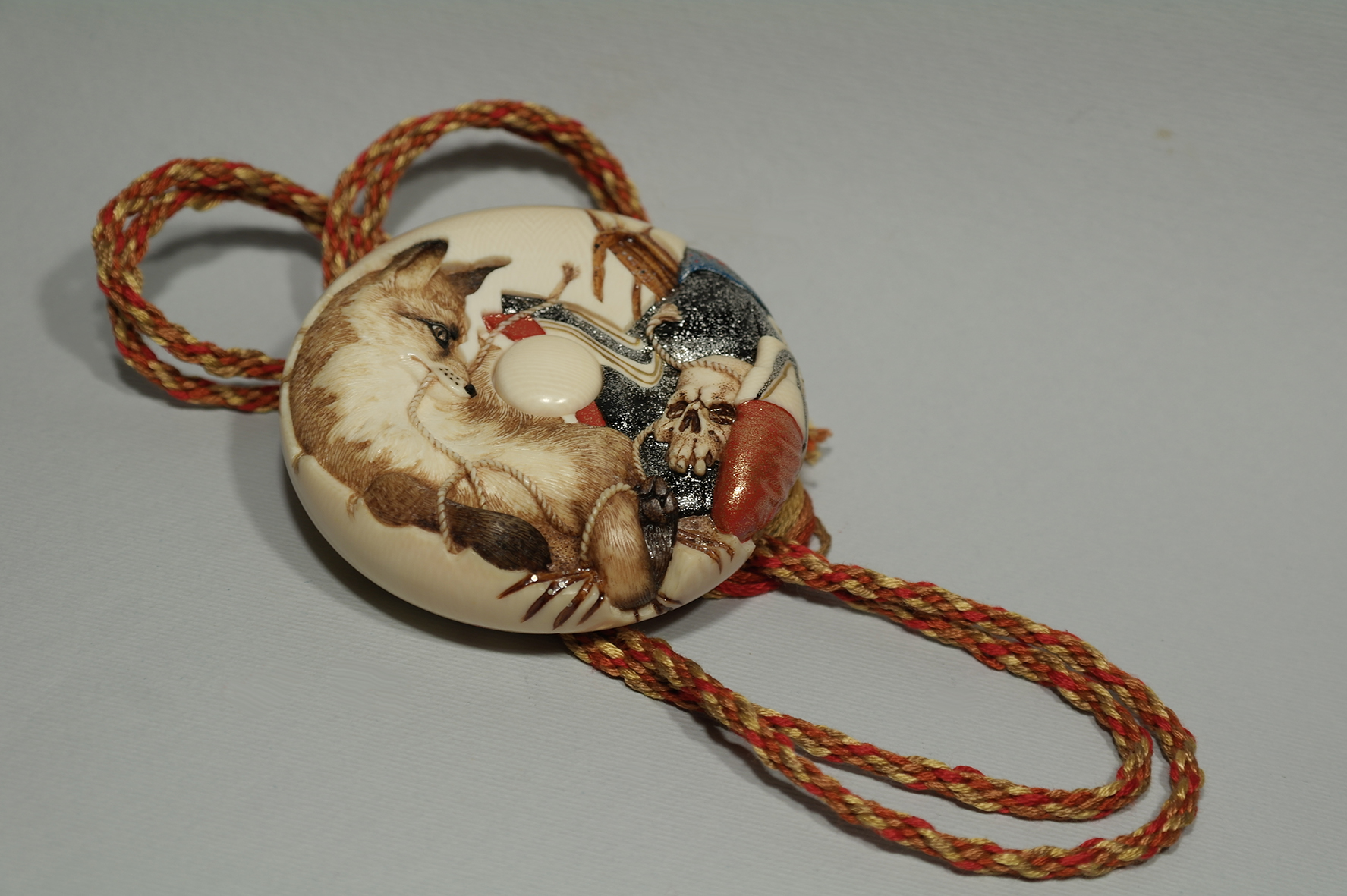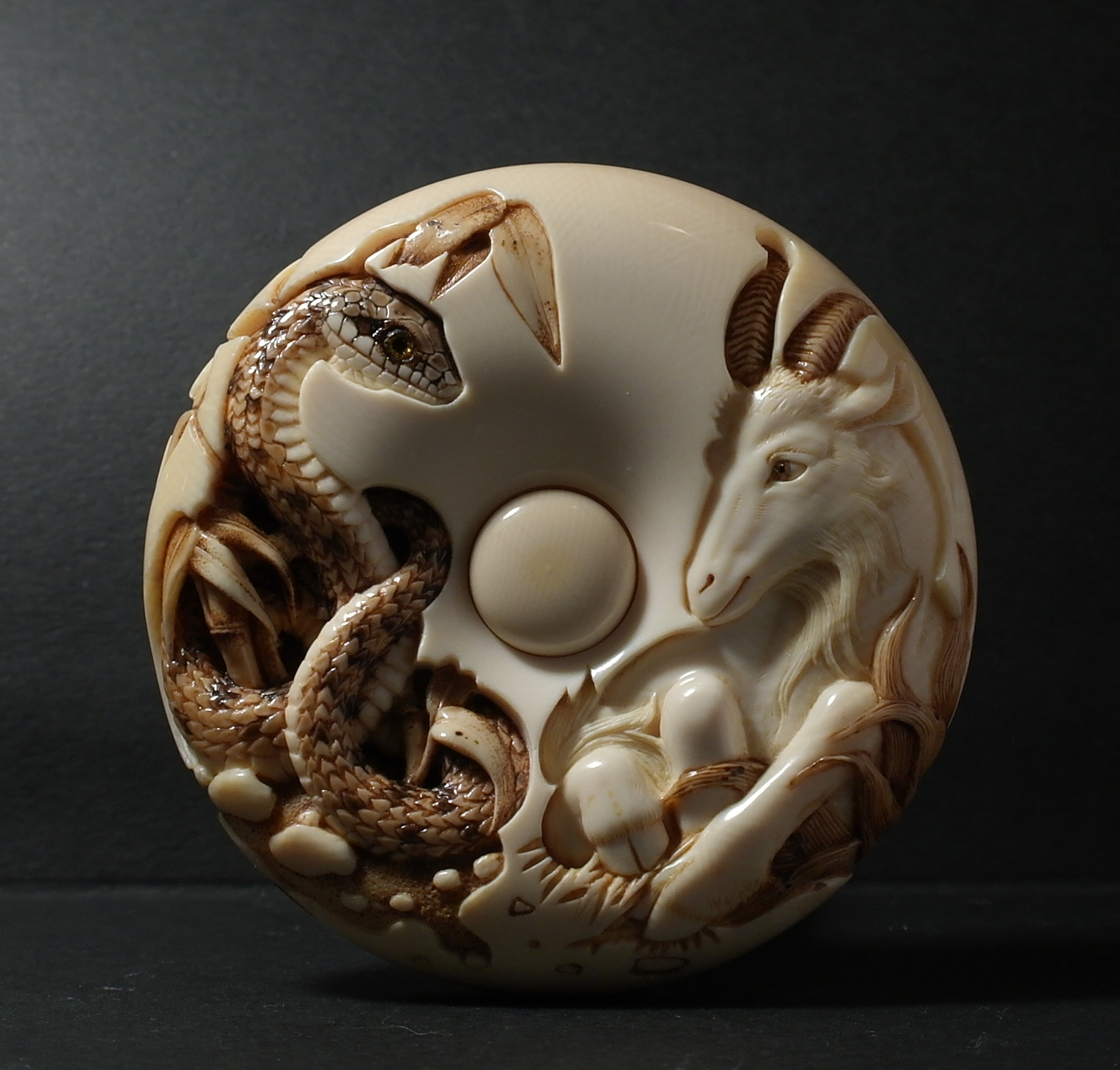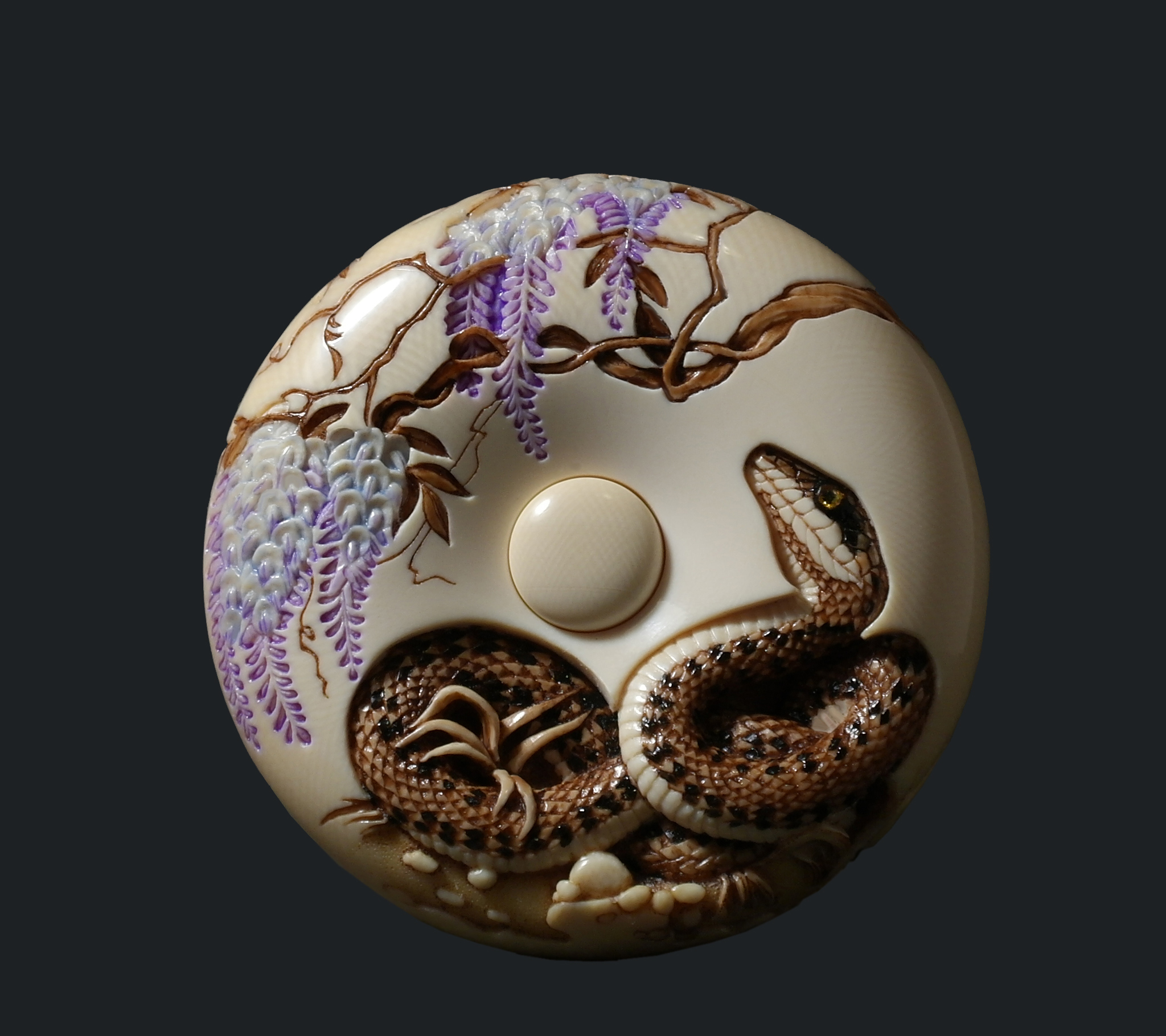SHISHIAIBORI NETSUKE
KITSUNE WITH 5 TAILS
12 images
Kitsune are believed to possess superior intelligence, long life, and magical powers. They are a type of yōkai. The word kitsune is sometimes translated as 'fox spirit', which is actually a broader folkloric category. This does not mean that kitsune are ghosts, nor that they are fundamentally different from regular foxes. Because the word spirit is used to reflect a state of knowledge or enlightenment, all long-lived foxes were believed to gain supernatural abilities. Shishiaibori Manju netsuke "Kitsune with 5 tails" was carved from mammoth tusk, 6.5 cm across, 2 cm thick. 2023. Russia, a private collection.
![KITSUNE WITH 5 TAILS]()
SNAKE AND GOAT
8 images
Shishiaibori Manju netsuke "Snake and Goat", junishi animals, carved from mammoth tusk, its diameter is 6.6 cm, the thickness is 2 cm, lacquered, stained, amber inlaid eyes. March 2015. Switzerland, private collection.
![SNAKE AND GOAT]()
SNAKE AND WISTERIA
7 images
In Japanese culture, the snake has long been associated with various symbols and concepts, including good and evil, wisdom and deceit, longevity and rebirth. In various myths and legends, the snake can be both a patron and a threat to heroes. She is often perceived as the link between humanity and the divine world. In the legend of Hachiman Taro, one of the great samurai, the symbolism of the snake takes a special turn. According to legend, in the moment of deepest need, when the samurai's fate is on the verge of being decided, the wisteria tree turns into a snake to help him in battle. The wisteria tree, which is a symbol of beauty and elegance in Japanese culture, in this case represents strength and protection for the Hachiman Taro. In Japan, there is a temple dedicated to Hachiman Taro, which attracts pilgrims from all over the Japanese archipelago due to its unique history and connection with the legendary hero. In the center of the temple courtyard grows an ancient wisteria, considered one of the oldest in the country. Its branches, curved and flexible, seem to symbolize the strength and flexibility of the tree, ready to take the form of a snake to help the samurai in his fight. http://town-murata.com/2010/05/post-21.html Shishiaibori Manju netsuke "Snake and WIsteria", carved from mammoth tusk, its diameter is 6.6 cm, the thickness is 2 cm, lacquered stained, amber inlaid eye. December 2015. Switzerland, private collection.
![SNAKE AND WISTERIA]()


